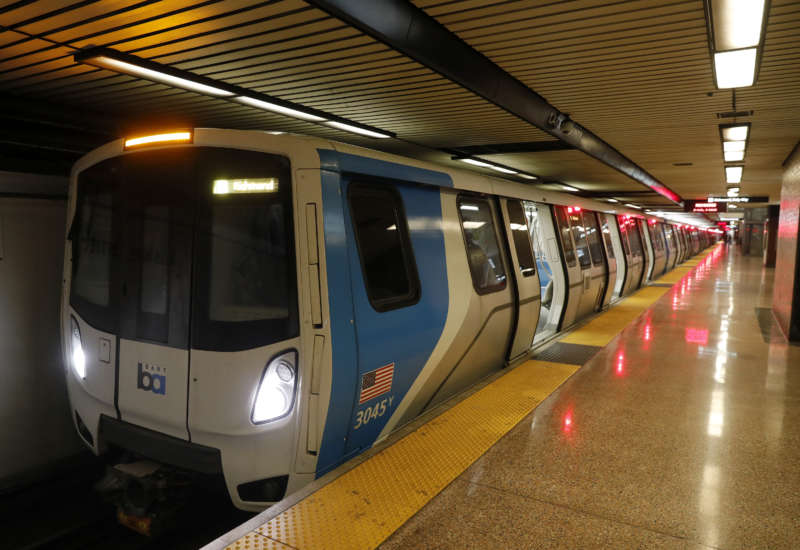The $1.2 trillion infrastructure bill that passed earlier this month fell short of many progressive aspirations, shrinking to fit Republican demands. However, if implemented wisely (in conjunction with the $3.5 trillion reconciliation bill), it could still open the door to important new possibilities for U.S. governance, in which the feds, cities and states learn to better cooperate with each other to use their economic leverage to ramp up large-scale (and long-overdue) social investments.
After all, $1 trillion-plus is a lot of money. If and when the 2,700-page bill becomes law, vast sums will start flowing to build or upgrade bridges, roads and sewer systems — traditional brick-and-mortar infrastructure investments. Even a small state like Mississippi stands to gain upwards of $3 billion for its highways and hundreds of millions of additional dollars to repair bridges.
But it isn’t just about bricks and mortar. The bill will also expand broadband access, improve cybersecurity, set up huge networks of electric vehicle charging stations around the country and clean up polluted superfund sites. There are provisions for improving wildlife crossing points on roads, for creating better pedestrian and bicycle routes in cities and for tackling invasive species.
As is the way with big spending bills like this, much of the actual implementation will occur over the coming years at a city and state level. That’s critical to remember, because, for decades now, many localities have failed to invest adequately in infrastructure, preferring instead to cut taxes and to defer needed improvements. The result has been dilapidation, with the U.S. ranking 13th out of advanced economies in the quality of its infrastructure, according to a much-quoted study by the World Economic Forum. In 2019, the Center on Budget and Policy Priorities (CBPP) reported that state and local government infrastructure investments had declined from a high of 3 percent of the country’s GDP in the 1960s to less than 2 percent a half century later. Making matters worse, the CBPP researchers found, was that the federal government was also pulling back on such investments. The result has been akin to what, in earlier decades, the economist John Kenneth Galbraith derided as “public squalor, private affluence” — a society with a glut of wealthy people living in wealthy neighborhoods, surrounded by a crumbling public infrastructure that they have largely opted out of.
Now, finally, that trend may be in the process of being reversed.
Cities, in particular, stand to gain massively from the infrastructure bill, with an array of ambitious public transport expansions ready to go. In northern California, for example, the Bay Area’s BART trains are soon to be extended down to the San Jose area. And across the country, in Boston, a coalition of business leaders recently unveiled a sweeping plan to use infrastructure dollars to massively upgrade the city’s public transit system, to set in place an all-electric bus fleet, and to boost local investments already underway in climate change mitigation methods, such as improving culverts and dams to better resist flood surges, and investing in high-tech coastal and weather monitoring systems.
Many older cities will use some of the dollars coming their way to update water systems that are reliant on lead pipes. In fact, fully $15 billion is specifically ear-marked for this, allowing Chicago — which had already started work on creating pilot programs, using its own funds, to remove lead pipes in some neighborhoods — and other cities a once-in-a-generation chance to remove these dangerous, antiquated pipes.
For western states, billions of dollars allocated for water infrastructure investments will allow them to increase their storage facilities, upgrade their dams and invest in state-of-the-art desalination projects. Given the dire drought situation in the West and Southwest, which recently triggered unprecedented restrictions on Colorado River water distribution, such investments are both long overdue and also increasingly vital for the western states’ booming populations. These projects won’t, of course, solve the water crisis by themselves, but they will at least allow states a fighting chance to invest more in long-term strategies to mitigate this growing calamity.
For decades now, many localities have failed to invest adequately in infrastructure, preferring instead to cut taxes and to defer needed improvements.
For southern states, which have generally lagged on building up rural infrastructure in recent years as their political leaders have instead focused on tax cuts, the bill offers an accelerated move toward broadband access that is, in some ways, comparable to the rural electrification projects of the New Deal. In Georgia, for example, which ranks near the top of state lists for internet access, but which has a large urban-rural divide, $100 million will become available for rural broadband expansion. A similar amount will go for broadband access in Mississippi, which ranks near the bottom for internet access, according to a U.S. News survey.
This something-for-everybody approach explains why the infrastructure bill enjoys such strong public support, and why, despite the GOP’s desire to hamstring the Biden administration at every turn, Mitch McConnell and many of his colleagues felt compelled to support its passage.
For decades, a disproportionate number of state and local governments, pandering to a conservative public sentiment, have bought into conservative strategist Grover Norquist’s infamous notion that the duty of public officials is to shrink government down to a size that it can be drowned in a bathtub. Now, in a pandemic era that has clearly demonstrated the importance of big-spending, rational, effective governance, the public’s thinking on this has shifted dramatically. Increasingly, so too has that of U.S. political leadership. Assuming the infrastructure bill does indeed soon pass into law, it could provide city, state and federal leaders a unique opportunity to show residents that, when the funds are made available, government can actually deliver projects and programs that improve people’s lives in tangible, easy-to-understand ways.


